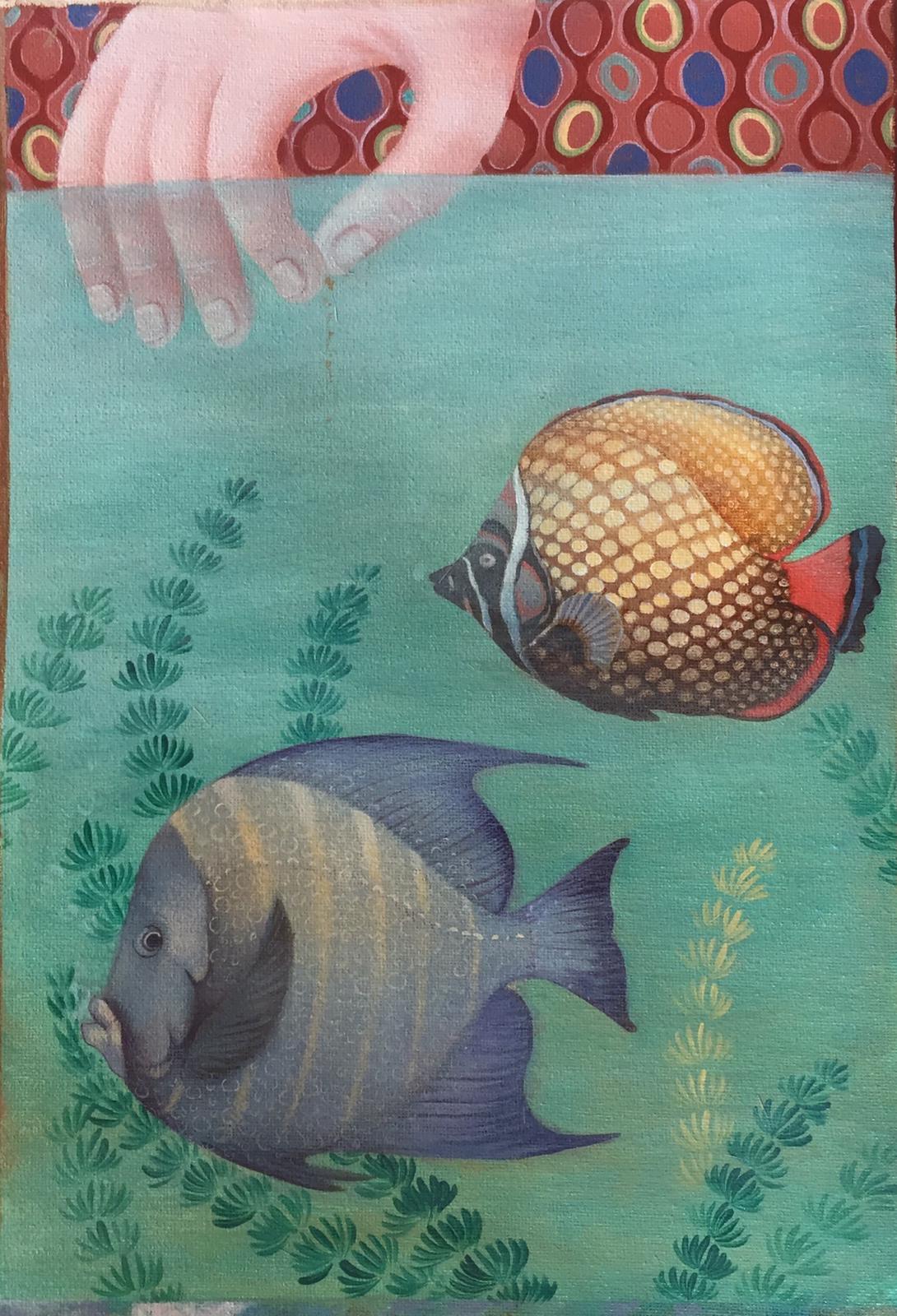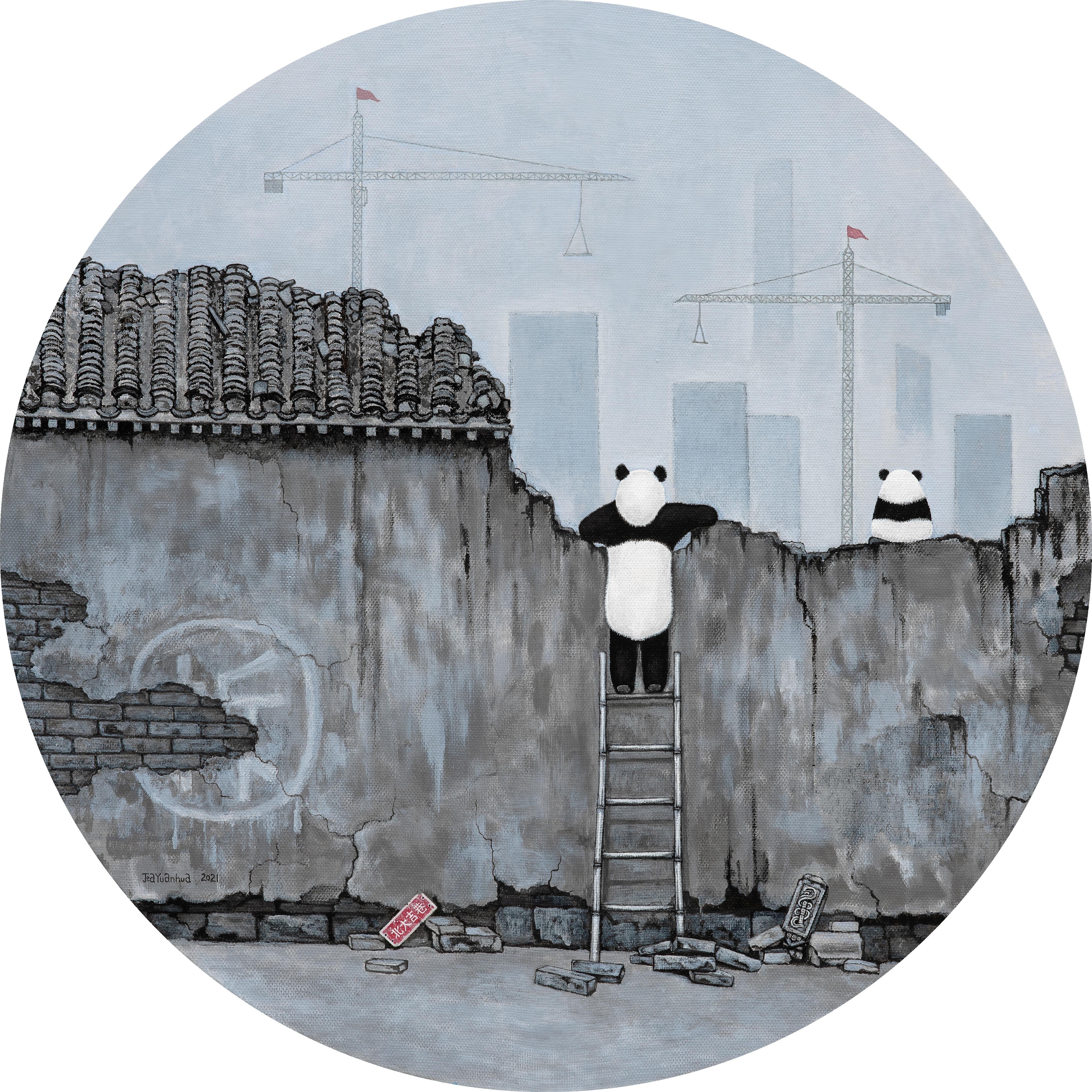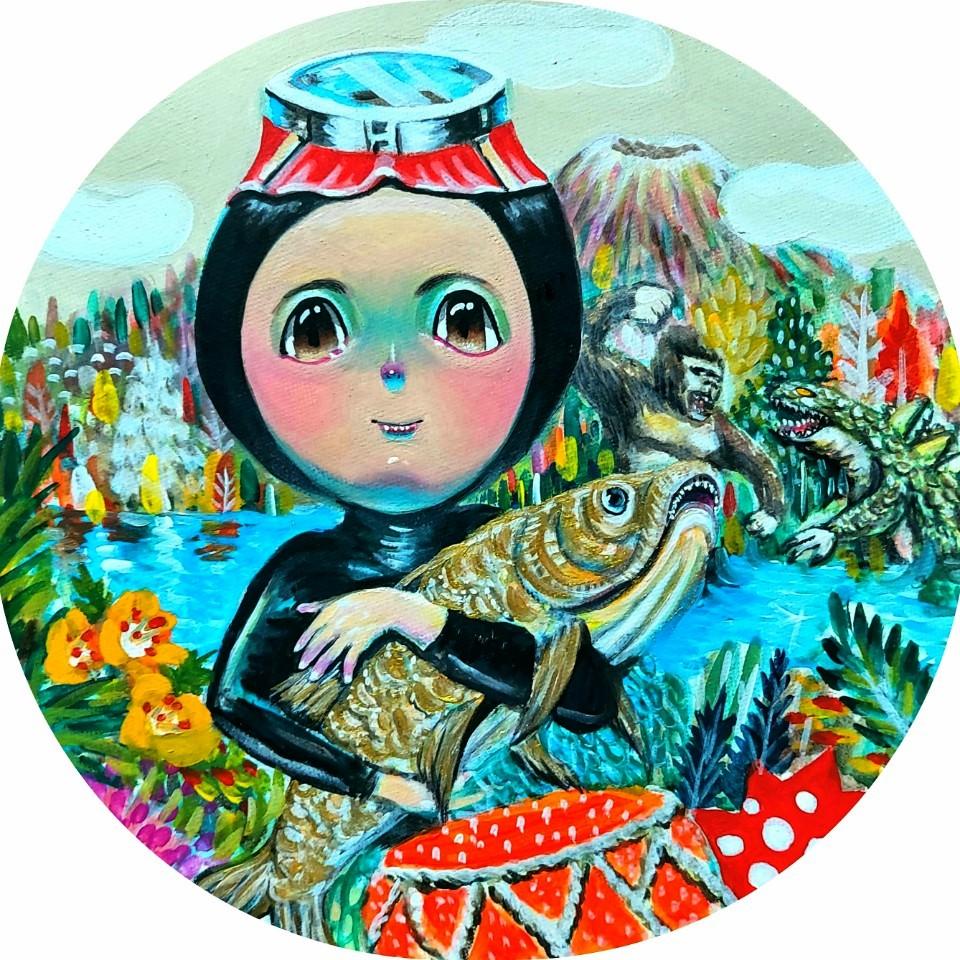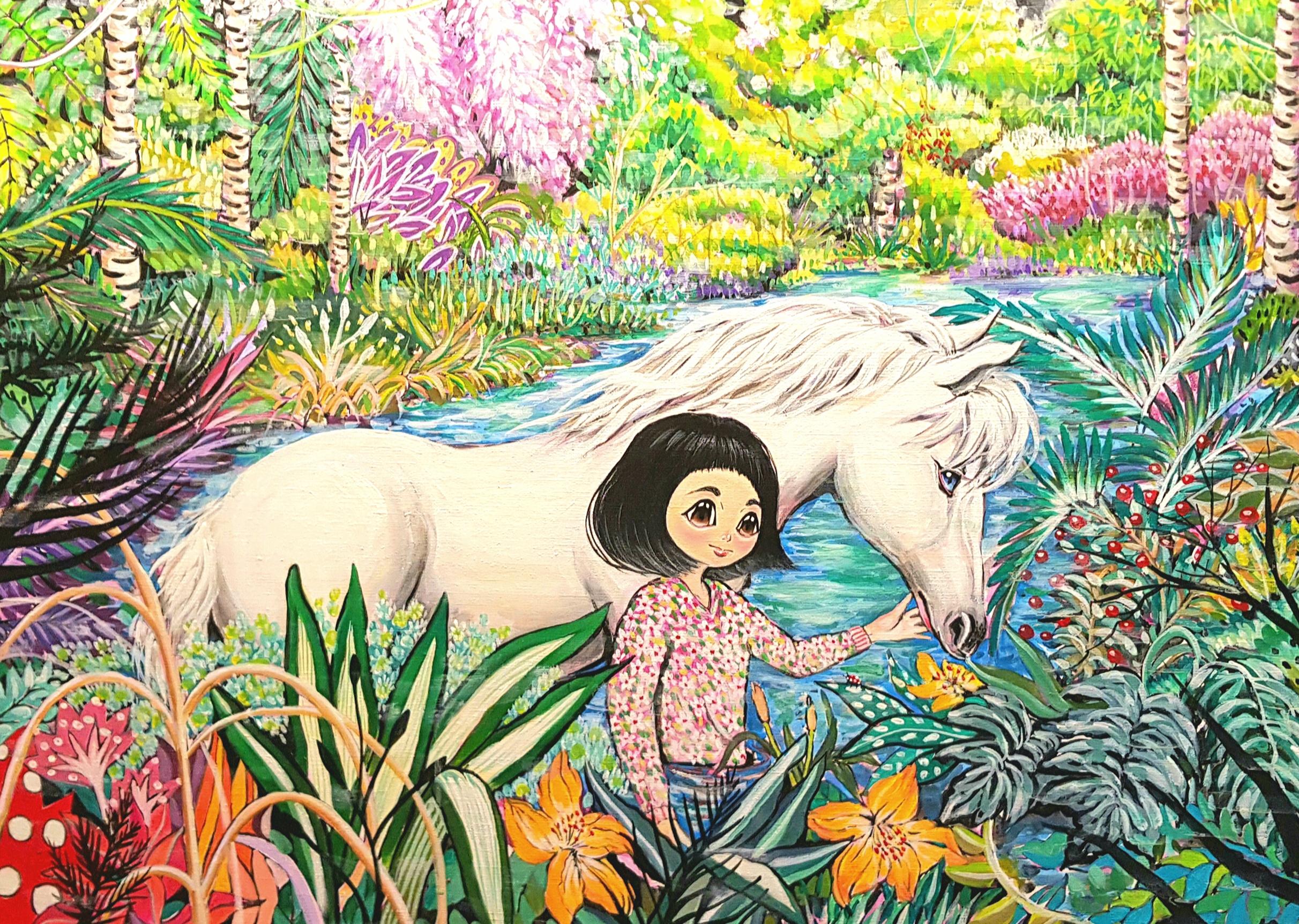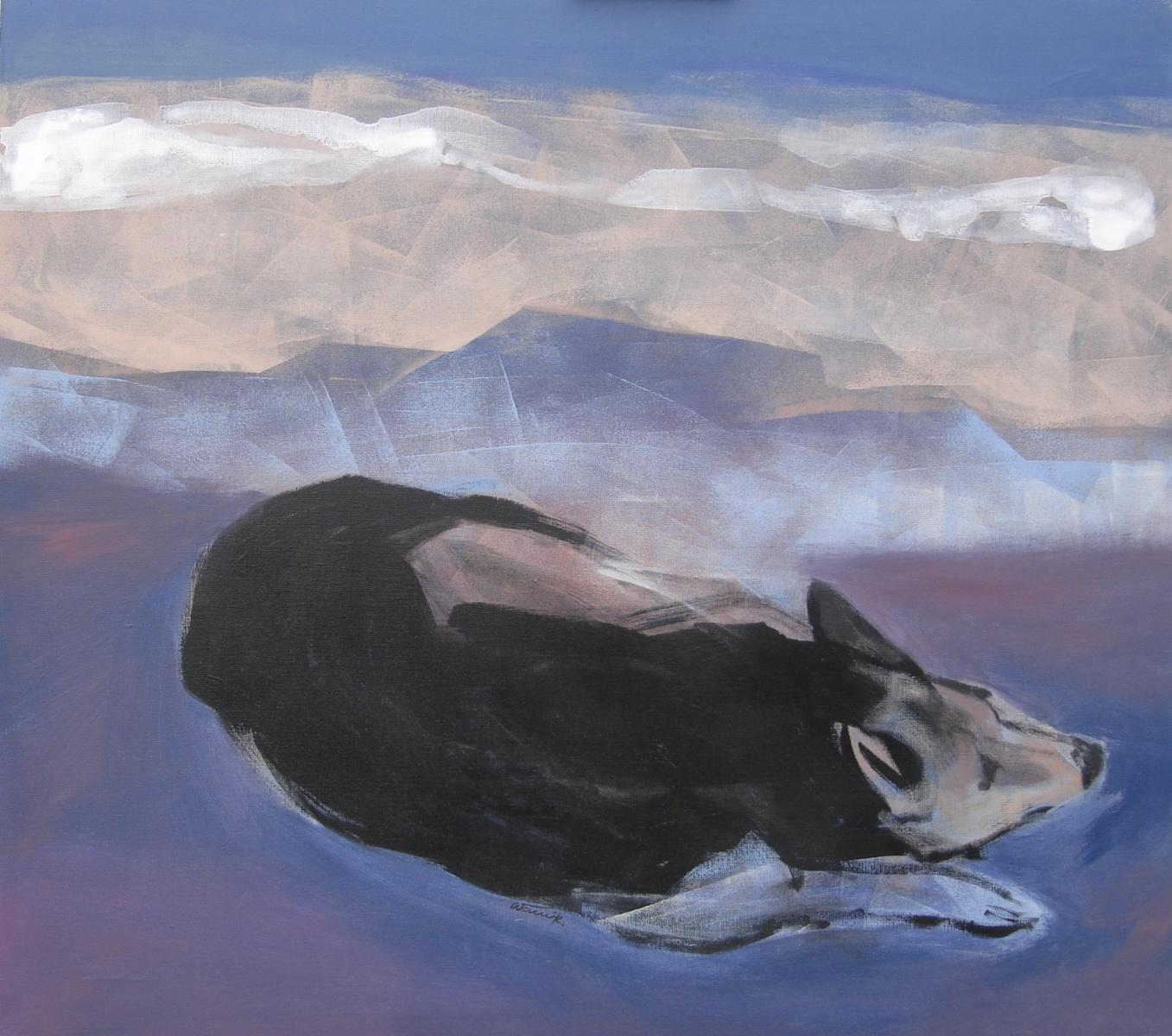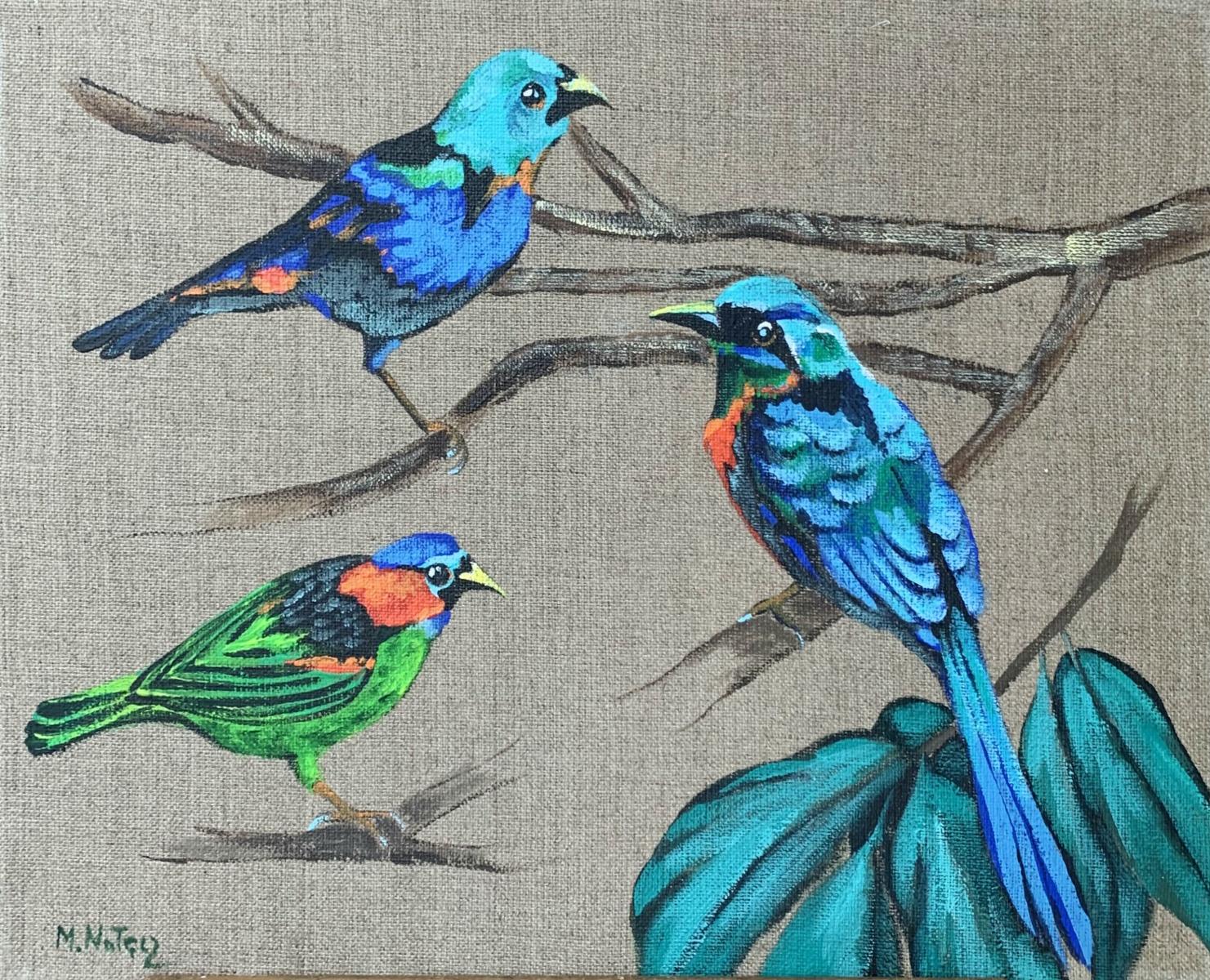Items Similar to Shadowing Yourself
Want more images or videos?
Request additional images or videos from the seller
1 of 5
Gordon McConnellShadowing Yourself2019
2019
About the Item
This is a framed painted.
Biography
Creating paintings inspired by western movies and by Remington and Russell, he is a native of the West, having been born and raised in rural Colorado. He studied art at Baylor University in Waco, Texas; at the California Institute of the Arts in Valencia, and at the University of Colorado, Boulder where he earned a Master's Degree in 1979.
For two decades he worked as curator at the Yellowstone Art Museum in Billings, Montana, before leaving in 1999 to begin work as a full-time painter and independent curator.
His work is in the collections of the Buffalo Bill Historical Center in Cody, Wyoming; the Art Museum of Missoula; and the Yellowstone Art Museum; the Federal Reserve Bank in Helena, Montana; and the Deaconness Medical Center in Billings, Montana.
Artist Statement
For a long time, the images in my paintings have been identifiably, even iconically, western-stagecoaches and false-front main streets, poker games and gun battles, cowboys, Indians, cavalry troopers and horses, all suspended in a choreographed matrix of dancing paint. Distinct from the traditional western genre-which inventories the minutia of cowboy gear or tells sentimental stories of rangeland romance-my paintings embody something more elemental and timeless, animated and abstract. The images tend to be stark, graphic, and charged with painterly energy. Though they are derived from fugitive television images, the paintings, as paintings, are still, silent and non-ephemeral. They register the technological transfer of primal shadows onto the electroluminescent screens of our collective consciousness, a shimmering blur of perception and memory transposed in an interchange of gesture and description, painted marks simultaneously arresting and embodying movement. I've always liked what a painter friend, Marc Vischer, wrote in 1988 about an early group of my western paintings. Now, I'm fourteen years closer to actualizing my vision for this work, and his astute remarks seem more pertinent today than they did then. He wrote in part, "For McConnell, a searing light emanates from a new desert: that of television. And from that most desolate backdrop, he salvages fragments from a movie world that spoke of honor in a land that was lawless. In a romantic sense, McConnell's works are a visual seance. Figures, like specters distorted through intense heat waves, are captured from their eternity of 24 frames a second. Their shapes and shadows are brought back into a radically different world and given substance and texture. It is an impossible attempt to freeze them, to arrest the present's ceaseless molestation of the past, to close off the continuum. Sometimes this is done darkly and thickly as an emphatic gesture of permanence. In other works a few light strokes quickly applied suggest the ephemeral nature of film and perhaps the fleeting nature of our own lives."
I have been examining new imagery in my paintings, drawing subjects from Mexican graphic novelas, modern women and men of romance and mystery from the mid-20th century, motorcycles and airplanes. The end titles of movies, stated in several languages, have inspired me to begin a new series of cross-media translations in both acrylic and watercolor. My paintings have long begun where the movies have left off. The elements of water and light co-mingle in some pieces from this series and in others which take the viewpoint of a swimmer, watching other swimmers from the wet side of this aqueous membrane, looking up toward the light.
My arrival in Montana in 1982 brought me into intimate contact with some of the most storied places of the historic West and also gave me the opportunity to study the paintings of two of the most influential codifiers of western imagery, Frederic Remington and Charlie Russell. I became aware of how decisive an effect their work, and the work of other western illustrators, had on the formulations of filmmakers like John Ford, William Wyler, and Howard Hawks. At the same time, I recognized how distinctly different the formalized imagery of western films, in its temporal, technological, and theatrical mediation, is from any painting.
- Creator:
- Creation Year:2019
- Dimensions:Height: 16 in (40.64 cm)Width: 20 in (50.8 cm)
- Medium:
- Movement & Style:
- Period:
- Condition:
- Gallery Location:Denver, CO
- Reference Number:1stDibs: LU498310412552
About the Seller
5.0
Vetted Seller
These experienced sellers undergo a comprehensive evaluation by our team of in-house experts.
Established in 2000
1stDibs seller since 2016
245 sales on 1stDibs
Typical response time: 1 hour
- ShippingRetrieving quote...Ships From: Denver, CO
- Return PolicyThis item cannot be returned.
More From This SellerView All
- Tiger KingLocated in Denver, COElectric Coffin is coded within art history and ideologies from archetypes of mysticism. We explore found truths from modernity and a personal historical perspective. A process-drive...Category
2010s Contemporary Animal Paintings
MaterialsMixed Media, Acrylic, Canvas, Wood
- Cranes at DuskBy Thomas SwanstonLocated in Denver, COThis piece is a diptych. Thomas Swanston was born 1956 in Annapolis Md., Naval Hospital. He graduated from Hobart & William Smith Colleges 1978 with a Bachelor of Arts, with studie...Category
2010s Contemporary Animal Paintings
MaterialsGold, Silver
- Deep into TwilightBy Thomas SwanstonLocated in Denver, COThomas Swanston was born 1956 in Annapolis Md., Naval Hospital. He graduated from Hobart & William Smith Colleges 1978 with a Bachelor of Arts, with studies in London and at the Stud...Category
2010s Contemporary Animal Paintings
MaterialsGold, Silver
- Colt DragoonBy Gordon McConnellLocated in Denver, COBiography Creating paintings inspired by western movies and by Remington and Russell, he is a native of the West, having been born and raised in rural Colorado. He studied art at Baylor University in Waco, Texas; at the California Institute of the Arts in Valencia, and at the University of Colorado, Boulder where he earned a Master's Degree in 1979. For two decades he worked as curator at the Yellowstone Art Museum in Billings, Montana, before leaving in 1999 to begin work as a full-time painter and independent curator. His work is in the collections of the Buffalo Bill Historical Center in Cody, Wyoming; the Art Museum of Missoula; and the Yellowstone Art Museum; the Federal Reserve Bank in Helena, Montana; and the Deaconness Medical Center in Billings, Montana. Artist Statement For a long time, the images in my paintings have been identifiably, even iconically, western-stagecoaches and false-front main streets, poker games and gun battles, cowboys, Indians, cavalry troopers and horses, all suspended in a choreographed matrix of dancing paint. Distinct from the traditional western genre-which inventories the minutia of cowboy gear...Category
2010s Contemporary Figurative Paintings
MaterialsCanvas, Acrylic
- CowboyingBy Gordon McConnellLocated in Denver, COThis is a framed original painting. Biography Creating paintings inspired by western movies and by Remington and Russell, he is a native of the West, having been born and raised in rural Colorado. He studied art at Baylor University in Waco, Texas; at the California Institute of the Arts in Valencia, and at the University of Colorado, Boulder where he earned a Master's Degree in 1979. For two decades he worked as curator at the Yellowstone Art Museum in Billings, Montana, before leaving in 1999 to begin work as a full-time painter and independent curator. His work is in the collections of the Buffalo Bill Historical Center in Cody, Wyoming; the Art Museum of Missoula; and the Yellowstone Art Museum; the Federal Reserve Bank in Helena, Montana; and the Deaconness Medical Center in Billings, Montana. Artist Statement For a long time, the images in my paintings have been identifiably, even iconically, western-stagecoaches and false-front main streets, poker games and gun battles, cowboys, Indians, cavalry troopers and horses, all suspended in a choreographed matrix of dancing paint. Distinct from the traditional western genre-which inventories the minutia of cowboy gear or tells sentimental stories of rangeland romance-my paintings embody something more elemental and timeless, animated and abstract. The images tend to be stark, graphic, and charged with painterly energy. Though they are derived from fugitive television images, the paintings, as paintings, are still, silent and non-ephemeral. They register the technological transfer of primal shadows onto the electroluminescent screens of our collective consciousness, a shimmering blur of perception and memory transposed in an interchange of gesture and description, painted marks simultaneously arresting and embodying movement. I've always liked what a painter friend, Marc Vischer, wrote in 1988 about an early group of my western paintings. Now, I'm fourteen years closer to actualizing my vision for this work, and his astute remarks seem more pertinent today than they did then. He wrote in part, "For McConnell, a searing light emanates from a new desert: that of television. And from that most desolate backdrop, he salvages fragments from a movie world that spoke of honor in a land that was lawless. In a romantic sense, McConnell's works are a visual seance. Figures, like specters distorted through intense heat waves, are captured from their eternity of 24 frames a second. Their shapes and shadows are brought back into a radically different world and given substance and texture. It is an impossible attempt to freeze them, to arrest the present's ceaseless molestation of the past, to close off the continuum. Sometimes this is done darkly and thickly as an emphatic gesture of permanence. In other works a few light strokes quickly applied suggest the ephemeral nature of film and perhaps the fleeting nature of our own lives." I have been examining new imagery in my paintings, drawing subjects from Mexican graphic novelas, modern women and men of romance and mystery from the mid-20th century, motorcycles and airplanes. The end titles of movies, stated in several languages, have inspired me to begin a new series of cross-media translations in both acrylic and watercolor. My paintings have long begun where the movies have left off. The elements of water and light co-mingle in some pieces from this series and in others which take the viewpoint of a swimmer, watching other swimmers from the wet side of this aqueous membrane, looking up toward the light. My arrival in Montana in 1982 brought me into intimate contact with some of the most storied places of the historic West and also gave me the opportunity to study the paintings of two of the most influential codifiers of western imagery, Frederic Remington and Charlie Russell...Category
2010s Contemporary Figurative Paintings
MaterialsCanvas, Acrylic
- We Took Them for SoldiersBy Gordon McConnellLocated in Denver, COThis is a framed painted. Biography Creating paintings inspired by western movies and by Remington and Russell, he is a native of the West, having been born and raised in rural Colorado. He studied art at Baylor University in Waco, Texas; at the California Institute of the Arts in Valencia, and at the University of Colorado, Boulder where he earned a Master's Degree in 1979. For two decades he worked as curator at the Yellowstone Art Museum in Billings, Montana, before leaving in 1999 to begin work as a full-time painter and independent curator. His work is in the collections of the Buffalo Bill Historical Center in Cody, Wyoming; the Art Museum of Missoula; and the Yellowstone Art Museum; the Federal Reserve Bank in Helena, Montana; and the Deaconness Medical Center in Billings, Montana. Artist Statement For a long time, the images in my paintings have been identifiably, even iconically, western-stagecoaches and false-front main streets, poker games and gun battles, cowboys, Indians, cavalry troopers and horses, all suspended in a choreographed matrix of dancing paint. Distinct from the traditional western genre-which inventories the minutia of cowboy gear or tells sentimental stories of rangeland romance-my paintings embody something more elemental and timeless, animated and abstract. The images tend to be stark, graphic, and charged with painterly energy. Though they are derived from fugitive television images, the paintings, as paintings, are still, silent and non-ephemeral. They register the technological transfer of primal shadows onto the electroluminescent screens of our collective consciousness, a shimmering blur of perception and memory transposed in an interchange of gesture and description, painted marks simultaneously arresting and embodying movement. I've always liked what a painter friend, Marc Vischer, wrote in 1988 about an early group of my western paintings. Now, I'm fourteen years closer to actualizing my vision for this work, and his astute remarks seem more pertinent today than they did then. He wrote in part, "For McConnell, a searing light emanates from a new desert: that of television. And from that most desolate backdrop, he salvages fragments from a movie world that spoke of honor in a land that was lawless. In a romantic sense, McConnell's works are a visual seance. Figures, like specters distorted through intense heat waves, are captured from their eternity of 24 frames a second. Their shapes and shadows are brought back into a radically different world and given substance and texture. It is an impossible attempt to freeze them, to arrest the present's ceaseless molestation of the past, to close off the continuum. Sometimes this is done darkly and thickly as an emphatic gesture of permanence. In other works a few light strokes quickly applied suggest the ephemeral nature of film and perhaps the fleeting nature of our own lives." I have been examining new imagery in my paintings, drawing subjects from Mexican graphic novelas, modern women and men of romance and mystery from the mid-20th century, motorcycles and airplanes. The end titles of movies, stated in several languages, have inspired me to begin a new series of cross-media translations in both acrylic and watercolor. My paintings have long begun where the movies have left off. The elements of water and light co-mingle in some pieces from this series and in others which take the viewpoint of a swimmer, watching other swimmers from the wet side of this aqueous membrane, looking up toward the light. My arrival in Montana in 1982 brought me into intimate contact with some of the most storied places of the historic West and also gave me the opportunity to study the paintings of two of the most influential codifiers of western imagery, Frederic Remington and Charlie Russell...Category
2010s Contemporary Figurative Paintings
MaterialsCanvas, Acrylic
You May Also Like
- Aquarium (Fishs) - naive art, made in red, green, blue, yellow colorsBy Elena NarkevichLocated in Fort Lee, NJAquarium (Fishs) - naive art, primitivism, folk art made in red, green, blue, yellow colors. Elena Narkevich deliberately chooses naive art, like the famous artists Henri Rousseau an...Category
2010s Contemporary Animal Paintings
MaterialsCanvas, Acrylic
- Chinese Contemporary Art by Jia Yuan-Hua - Paradise LostBy Jia Yuan-HuaLocated in Paris, IDFHutong is typical building of old Beijing, beautiful and quite, which is also a reflection of traditional clulture, for hundreds of years. There were more than 3,300 hutongs in old Beijing. Today, it is really hard to find an original hutong. They are vanished, replaced by new buildings. This artwork shows ruins of old hutong. The red sign "北大吉巷" that fell on the ground is its name. The upper part of the picture shows the modern city being built by human beings. On the left of old wall, there is Chinese character '拆', means tear down. On the bottom, there is beautiful gate...Category
2010s Contemporary Figurative Paintings
MaterialsCanvas, Acrylic
- Korean Art - Fantasy Jejuisland - Island Girl Story Chun-Ja Healing GardenBy Shin Seung-HunLocated in Paris, IDFShin Seung-Hun is a South-Korean artist born in 1979 who lives & works in Jeju Island, Korea. He is considered by critics as the new Korean Takashi Murakami.Category
2010s Contemporary Figurative Paintings
MaterialsCanvas, Acrylic
- Korean Art - Fantasy Jejuisland-Island Girl Story Chun-Ja’s Journey Of HappinessBy Shin Seung-HunLocated in Paris, IDFArtwork framed - white & wooden frame Shin Seung-Hun is a South-Korean artist born in 1979 who lives & works in Jeju Island, Korea. He is considered by critics as the new Korean...Category
2010s Contemporary Figurative Paintings
MaterialsCanvas, Acrylic
- Boogie in thoughts - Figurative acrylic painting, Dog, Animal, Blue & purpleBy Wlodek WarulikLocated in Warsaw, PLWŁODEK WARULIK (born in 1953) Włodzimierz Warulik studied at the Academy of Fine Arts at the Atelier of Painting. He graduated in 1981 from the atalier of profesor Jan Lis. Driven b...Category
2010s Contemporary Animal Paintings
MaterialsCanvas, Acrylic
- Gardens of delight 12 - Figurative painting, Birds, Realistic, Vibrant colorsBy Magdalena NałęczLocated in Warsaw, PLMagdalena Nałęcz (b. 1970) She graduated from the Academy of Fine Arts in Cracow in 1995. She received numerous scholarships and prizes: in 1997 the scholarship of the city of Cracow...Category
2010s Contemporary Figurative Paintings
MaterialsAcrylic, Canvas
